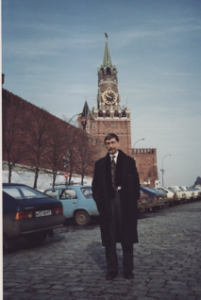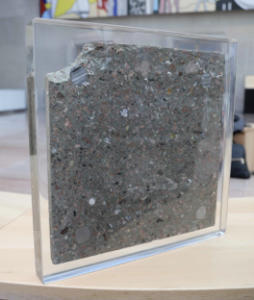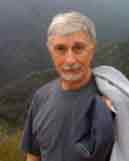by Robert Baker
My 1990 visit to Russia was revelatory. As Director of the U.S. Information Agency’s (USIA) Regional Program Office in Vienna, I traveled to all the post-communist European countries to determine how our printing, photographic, computer, management, exhibit and library services could assist our embassies there. Russia was a world of chaos, crooks, collapse, and courage in those years.
I walked through downtown Moscow past dumpy, shabby women in bulging, thick coats. They carried string bags with one cabbage, a few potatoes, and rarely, a small, bloody paper packet of meat. They shoved through the crowds on broad sidewalks caught in swirling snow.

People, mostly women, stood almost shoulder to shoulder on the sidewalk selling: a single dining room chair, a half dozen slips, a couple pairs of old shoes, an old bra. I had never seen such desperate, tiny commerce outside the world’s poorest countries.
Seventy years of harsh, often cruel, Soviet rule followed communism’s early idealism. It fed corruption, and eventually brought economic collapse and the end for Soviet government by 1991. Central planning for a vast economy was too difficult to manage efficiently.
The U.S. embassy also struggled to manage work and living conditions in these difficult circumstances. For my 1990 visit, the Moscow Public Affairs Officer gave me the spare bedroom in his apartment in the brand new embassy “golden ghetto”. It was a well-planned ghetto as were the buildings and grounds inside its protective fence. Good planning and design, but poor workmanship. On my second morning, the hall was flooded a quarter inch deep. The sewage system had backed up overnight. My host was at the end of the hall with a bucket and mop, as this happened regularly. Although embassy construction was overseen by Washington, D.C., the work was done by local Russian contractors.
Similarly, the new U.S. embassy building, also on the compound, was a gigantic, hugely expensive mess. Sloppy U.S. supervision of the building construction permitted Soviet intelligence to plant listening devices in the new, high rise building. The Soviet spy microphones were discovered only after the embassy building was completed and opened.

The old embassy building, facing the Garden Ring road, where most U.S. diplomats worked, was like Soviet society, with lots of security on every floor. You needed special tags to gain access to each floor with armed Marine guards on every floor to check. Years earlier, the Soviets had used a woman to recruit a Marine guard who eventually turned himself in to our security. Chaos inside the Embassy and outside it, too.
How to Start a Small Business
The U.S. wanted to help Russians replace communism and its failed central planning, partly by encouraging private, small Russian businesses. I got USIA to buy the rights to an American book, How to Start a Small Business. Its 200 pages of practical, detailed, simply put instructions advised on how to raise capital, make a budget, track your stock, advertise, etc. Using an excerpt of the American flag for a new cover, our Regional Program Office presses in Vienna printed 10,000 copies in English. Moscow and Prague wanted it in their languages, so we translated the book into Russian and Czechoslovakian, printed, and shipped to them.
The embassy used the book in classes on how to run a small business. They also sent it to schools and libraries. Retired American businessmen had written the book to help Americans, but it applied universally.
After meeting Russian media bosses in Moscow, I arranged for USIA feature stories about the U.S. to be e-mailed from our center in Vienna directly to the new, privately published Russian version of Playboy magazine. I also arranged similar transmission for several other Russian print and radio outfits, with content that came daily from Washington in about 5,000 words of news and features.
I offered ex-communist and independent media free use of our photo stock in Vienna, which included 100,000 Americana photos. USIA had supplied many publishers around the world with photos about the U.S. for decades to encourage factual books about America. In 1991, a new Russian geography textbook used more than 100 of our photos from Vienna.
Replacing Soviet Posters with the World Trade Center
Everywhere I went, I noticed light colored areas on media editors’ and academic professors’ walls. These were spots where Soviet propaganda posters had hung; they had nothing to replace them.
Back in Vienna, I searched our files and online for a photographic image to fill those empty spaces on walls. With an appealing U.S. scene, we could print calendars that could be put over the bare patches left by tossed-out communist posters.
We found a great shot looking down through the clouds at the World Trade Center towers in New York. (Long before 9/11 destroyed them). Our Viennese staff designed a calendar on the bottom seven inches of the 4×3 foot full color photo. We printed 20,000 copies in our Vienna factory and sent them to our embassies and consulates as cheap gifts for schools, universities, media operations, etc. The colorful posters cost fifteen cents each for my shop to produce.
Our embassies gave the Trade Center calendars as presentation items all over the former communist world, symbolically replacing communism with capitalism. Because our shop in Vienna, the Regional Program Office of USIA, bought paper and ink in huge quantities, our products were very cheaply produced. We typically each month printed a million impressions (one impression counts for each page of one color; a full color page goes through the press four times and counts as four impressions).
We printed USIA magazines, books, maps, pamphlets, etc. The staff in Vienna and contractors in a dozen countries translated them into 30 different languages, from Albanian to Uzbek. After the fall of communism, we did what we could to meet the huge demand for true information about the U.S. in countries fed almost exclusively anti-American propaganda for 70 years.
Russians are a great people who have suffered great tragedy, but their energy and spirit gave some hope for a better future. The tragic, stupid, destructive invasion of Ukraine by Putin puts at risk all the gains Russians have accomplished despite the country’s corruption. The punishments of Putin’s Russia by the EU, the U.S. and allies may one day restore peace but the cost already has been terrible, a failure for Russia and the world.![]()

Bob Baker began his career with the U.S. Information Agency as an intelligence analyst analyzing communist propaganda in East Africa. Subsequently, as a foreign service officer, Baker served in Uganda, Mali, London, Germany, Australia, Los Angeles, VOA Washington, and the Regional Program Office in Vienna.
